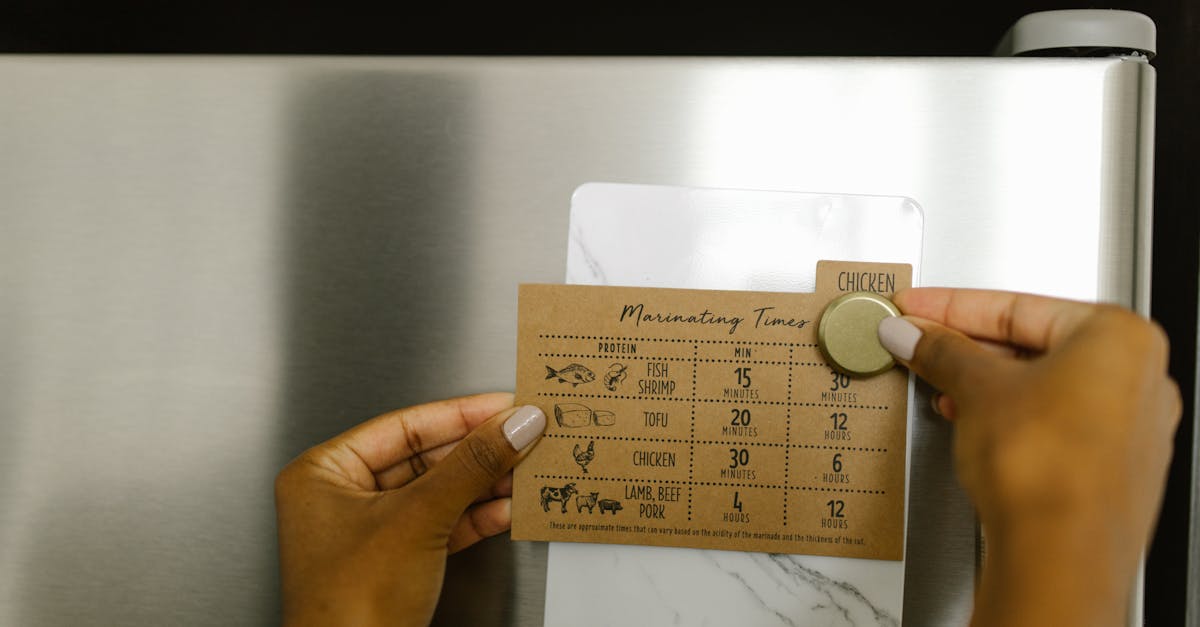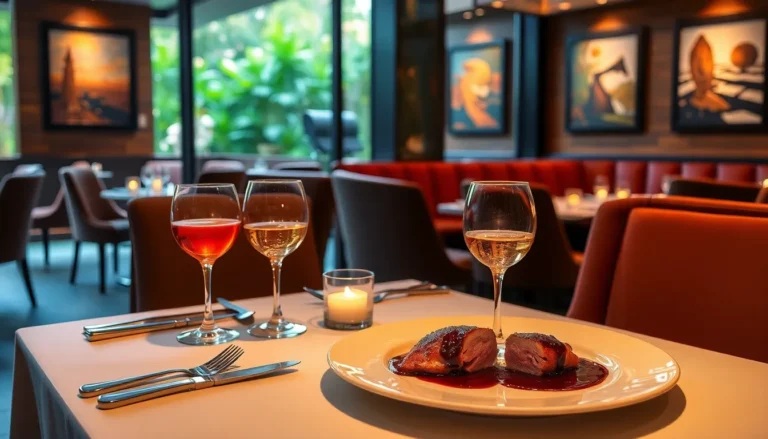Table of Contents
ToggleIn the chaotic world of cooking, a kitchen timer is more than just a gadget; it’s a culinary lifesaver. But what if this trusty tool could do more than just beep at you when your cookies are ready? With a sprinkle of creativity and a dash of humor, kitchen timers can transform from simple timekeepers into multi-tasking kitchen heroes.
Creative Kitchen Timer Hacks
Kitchen timers serve various purposes, and with some creativity, they become versatile kitchen companions. Below are some clever hacks to make the most of these handy devices.
Utilizing Multiple Timers
Using several timers at once simplifies managing cooking times for multiple dishes. They provide a way to track overlapping cooking processes, like roasting a chicken while boiling potatoes. Setting different timers for each dish ensures nothing gets overcooked. Organizing timers by color or label enhances clarity, making it easier to keep track of each one. Chefs find that coordinating multiple timers reduces stress and helps maintain an efficient workflow.
Customizing Timer Settings
Customizing settings on digital timers allows users to increase convenience and efficiency. Programmable features cater to specific recipes, enabling automatic adjustments based on cooking tasks. Setting timers for different intervals ensures precise results by accounting for varying cook times. Many digital kitchen timers offer unique alerts, making it easy to distinguish between cooking stages. Experimenting with custom settings leads to discovering a personalized cooking rhythm, ultimately enhancing the overall culinary experience.
Enhancing Meal Preparation
Kitchen timers play a crucial role in streamlining meal preparation. They help manage multiple dishes effortlessly.
Timing Cooking Stages
Track each cooking stage accurately using dedicated timers. Assign timers based on different recipes or cooking methods. For instance, set one timer for pasta boiling and another for sautéing vegetables. Adjust cooking times precisely and avoid overcooking. Utilize a digital timer’s memory function to store cooking durations for recurring recipes. Optimize preparation by programming the timers in advance for complex meals.
Coordinating with Other Tasks
Sync kitchen timers with other household chores for efficiency. Use timers to remind users when to check on laundry or clean dishes while waiting for food to cook. For example, set a timer for 10 minutes as a reminder to stir a simmering sauce, allowing multitasking in the kitchen. Establish a routine where cooking and home maintenance tasks complement each other. Arrange cooking cycles to align with meal prep, enabling smoother transitions between tasks.
Practical Applications
Kitchen timers serve various useful purposes in meal preparation. They enhance efficiency across different cooking tasks.
Baking and Roasting
Baking requires precision, and timers ensure the exact duration needed for each recipe. For cakes, setting a timer for 25 to 30 minutes helps guarantee proper rising. Roasting meats demands attention to temperature and time; timers can alert when it’s time to check for doneness. Utilizing separate timers for different dishes simplifies coordination. If a dish needs longer than anticipated, an additional timer can help track extra minutes. Prioritizing accurate timing leads to consistent baking and delightful results.
Meal Prepping and Batch Cooking
Timers drastically improve meal prepping efficiency. Setting a timer for each food item while chopping vegetables or marinating proteins keeps everything on schedule. Managing multiple batch cooking tasks becomes simpler when dedicated timers are in place; each timer can track its progress. For example, while grains cook, a timer can monitor sautéing vegetables. This structured approach leads to organized meal preparation. Keeping everything synchronized amplifies productivity while minimizing stress in the kitchen.
Troubleshooting Common Issues
Timers may sometimes experience issues that disrupt cooking. Start by checking battery life if a timer doesn’t turn on. Weak batteries can lead to erratic behavior, so replacing them typically resolves the issue.
In cases where a digital timer shows inaccurate times, resetting the device might help. This process often recalibrates the internal clock, improving accuracy for future uses. Ensure settings are adjusted correctly for intended countdowns.
Timers may also struggle with excess noise or malfunctioning sounds. If this occurs, inspect the speaker for obstructions. Clearing debris or physical barriers usually restores sound functionality.
Moreover, using multiple timers simultaneously can create confusion. To avoid mix-ups, label each timer based on its purpose. Assigning distinct colors or with separate sounds easily helps differentiate their functions.
When it comes to timers not syncing with other tasks, try to establish a routine. Consistent use can help create a mental map of timing for specific recipes. Developing this habit streamlines kitchen workflow and improves overall efficiency.
Unexpected shut-offs can frustrate many cooks. To mitigate this, ensure timers are placed on stable surfaces away from heat sources. Vibrations from cooking appliances might inadvertently trigger shut-offs.
Finally, if timers often reset or lose settings, selecting a model with a memory function could benefit users. This feature securely stores frequently used cooking times, reducing the hassle of manual input and making meal preparation smoother.
Embracing kitchen timer hacks can significantly elevate the cooking experience. By implementing these creative strategies, home cooks can manage their time more efficiently while juggling multiple dishes. Customizing settings and utilizing digital features not only streamlines meal preparation but also enhances the overall culinary workflow.
With the right approach, kitchen timers transform from simple tools into indispensable kitchen allies that inspire confidence and creativity. Whether it’s baking, roasting, or meal prepping, these hacks pave the way for a more organized and enjoyable cooking process. Adopting these techniques ensures that home cooks can focus on what truly matters—creating delicious meals with ease.








